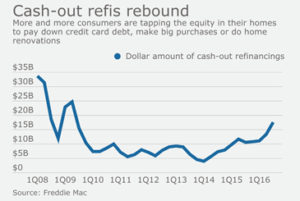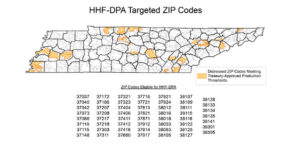
by koredesign | Feb 13, 2017 | LLT, News
 As businesses evolve in the digital era, it’s affecting their needs when it comes to physical space in commercial properties. Broker-owners of commercial firms should take note of three trends Transwestern recently highlighted in its first quarter Insights report covering the retail, industrial, and multifamily sectors.
As businesses evolve in the digital era, it’s affecting their needs when it comes to physical space in commercial properties. Broker-owners of commercial firms should take note of three trends Transwestern recently highlighted in its first quarter Insights report covering the retail, industrial, and multifamily sectors.
1. Retail: The Rise of Mobile Data
Retailers are getting more sophisticated in how they’re collecting mobile data about their customers. Many businesses are using mobile apps coupled with monitoring devices in their stores to track and interact with customers. If a consumer has that business’s app on their phone, it allows the retailers to engage with them by offering coupons or product suggestions. This personalized the shopping experience provides specialized data on consumer activity and interactions with the physical store location, according to Transwestern. This is influencing business owners’ location decisions and physical configuration needs at the storefront site.
2. Industrial: New Demands for E-Commerce Distribution Centers
Demands for faster shipments in online sales, and massive increases in e-commerce business is causing companies that have large fulfillment centers to rethink location. Previously, these online retailers chose industrial warehouses in lower cost areas outside of population centers. Today, there is a new demand for large commercial space closer to metro areas in order to more quickly and efficiently store and ship commodities to customers, according to Transwestern. These companies are seeking better access to various modes of transportation, such as trucks, rail, airfreight, and even seaports, So, real estate pros should identify sites with access to these amenities, as well as spaces that offer specific productivity and operation efficiencies that will help clients increase net operating income.
3. Multifamily: Micro-Unit Apartments in Urban Markets
As renters flock to urban centers for the live-work-play lifestyle, entry-level lease rates are becoming unaffordable for many recent college graduates, service workers, and young professionals, according to Transwestern. One way of providing more affordable living space is through micro-unit apartments. The Indie Apartments in Austin, Texas, for example, includes 138 apartments with 350-square-foot studios and 520-square-foot, two-bedroom units, and commercial restaurant space on the ground floor.
Read the full article.

by koredesign | Feb 10, 2017 | LLT, News
 The surge in home values is good news for homeowners looking to tap the equity in their homes to pay down debt or make big purchases, but consumer advocates worry that it may be setting the stage for a spike in loan defaults.
The surge in home values is good news for homeowners looking to tap the equity in their homes to pay down debt or make big purchases, but consumer advocates worry that it may be setting the stage for a spike in loan defaults.
Consumers have plenty of reasons to tap into their home equity, such as paying off credit card debt or financing long-delayed home-improvement projects. Banks are happy to oblige, especially with rising interest rates suppressing demand for traditional mortgage refinancing.
The problem is that a cash-out refi is much riskier than a credit card loan, said Sarah Wolff, a senior researcher at the Center for Responsible Lending.
“You are trading your unsecured debt for debt that’s tied to your home, and a default in that case would be much more catastrophic,” she said.
Banks are already seeing increased demand for cash-out refis. The total dollar amount of home equity cashed out rose 66% to $17.6 billion in the third quarter compared to the same period in 2015, according to Freddie Mac. The trend shows little sign of slowing down, said Len Kiefer, deputy chief economist at Freddie Mac.
“We expect overall volume of cash-out refis to trend higher,” Kiefer said.
Other lenders have placed bets recently that variations on the cash-out refinance model could catch fire with consumers. SoFi and Fannie Mae in November introduced a cash-out refi option specifically for paying down student loan debt.
Still, the overall industry level of cash-out refi volume remains at extremely low levels, even after a recent period of recovery, Kiefer said. The total dollar value of cash-out refis remained below $10 billion for several years during the recession. They have slowly inched back up, but remain well below pre-crisis levels of $30 billion and higher, so banks have plenty of capacity to lend, Kiefer said.
Interest rate shifts could also lead to more cash-out refis. The prime rate, which climbed to 3.75% in the fourth quarter, could continue to rise if the Federal Reserve proceeds with rate hikes. Credit card debt, largely based on the prime rate, could become more expensive and consumers could use cash-out refis to pay off those cards, Kiefer said.
That’s where the problems could surface for consumers, said the Center for Responsible Lending’s Wolff.
Total household debt rose 2.4% to $12.35 trillion in the third quarter compared to the same period in the previous year, according to the Center for Microeconomic Data at the Federal Reserve Bank of New York. Credit card debt, a portion of that total, rose 4.6% to $747 billion in the same period.
Continue reading.

by koredesign | Feb 9, 2017 | LLT, News
 The Tennessee Housing Development Agency is offering $15,000 in down payment assistance to help people who want to purchase a house in certain zip codes.
The Tennessee Housing Development Agency is offering $15,000 in down payment assistance to help people who want to purchase a house in certain zip codes.
Couple Ryne Iseminger and Paige Martin recently got engaged and are now talking about purchasing their first home.
“That is definitely something we are discussing. Pretty much daily,” said Iseminger.
After renting a home for nine years, the couple just learned about a new incentive making buying a house in Middle Tennessee an exciting option.
The Tennessee Housing Development Agency received $60 million in federal money from the U.S. Treasury’s Hardest Hit Fund.
Eligible borrowers will have access to that money.
“We will give you $15,000 in down payment and closing costs. It is forgivable over 10 years, no interest during that time, no payments during that time,” explained THDA’s Executive Director Ralph Perrey.
THDA will forgive 20 percent of the loan each year after six years until it is gone if you stay in the house. If the borrower does not refinance, sell, or move out of the home for 10 years, the entire $15,000 loan is forgiven.
“The idea here is to improve those neighborhoods, to strengthen neighborhoods not merely with investment but by the presence of invested home owners,” said Perrey.
Martin told News 2 she is tired of renting.
“You feel like every month when you write a check, it is pretty much going out the door and you will never see it again,” said Martin.
The goal is to revitalize communities in middle Tennessee that never recovered from the economic downturn.
THDA’s $15,000 down payment assistance program is available in 55 targeted zip codes spanning parts of 30 counties across Tennessee.
“That would just be a huge relief and definitely accelerate our plans to be able to move into a neighborhood faster then what we thought,” said resident Nikki Tigg who has been house hunting with her husband.
Read the full article here.

by koredesign | Feb 8, 2017 | LLT, News
 Mortgage rates have been wavering in a tight range for the past month, but a slight decrease last week helped put some energy back into the mortgage market.
Mortgage rates have been wavering in a tight range for the past month, but a slight decrease last week helped put some energy back into the mortgage market.
Total mortgage application volume rose 2.3 percent on a seasonally adjusted basis for the week from the previous week, according to the Mortgage Bankers Association. Applications, however, are still running a stark 23 percent below year-ago levels, due to a massive drop in loan refinancing.
Mortgage applications to refinance home loans increased 2 percent for the week, seasonally adjusted, but are 40 percent lower than a year ago. That’s because rates are higher than one year ago, and so many borrowers have already refinanced to near record-low rates that the pool of potential refinancers is shrinking.
The average contract interest rate for 30-year fixed-rate mortgages with conforming loan balances ($424,000 or less) decreased to 4.35 percent from 4.39 percent, with points remaining unchanged at 0.34 (including the origination fee) for 80 percent loan-to-value-ratio loans. The average rate in the same week last year was a full 44 basis points lower, at 3.91 percent.

by koredesign | Feb 7, 2017 | LLT, News
 The foreclosure picture continues to improve in the U.S., according to the recently released Black Knight Financial Services Mortgage Monitor.
The foreclosure picture continues to improve in the U.S., according to the recently released Black Knight Financial Services Mortgage Monitor.
An increase in cure activity, defined as a borrower paying their mortgage current from some stage of delinquency or foreclosure, helped in part to improve delinquencies in December 2016 according to the report. It also said more than 450,000 borrowers paid themselves current on their mortgages, representing a 17 percent monthly rise.
The inventory of loans in foreclosure declined by more than 30 percent year-over-year, edging out 2013 for the highest rate of decline on record. Severely delinquent foreclosures, defined as those that haven’t made a payment in over two years, dropped by 38 percent from 2015. Less delinquent foreclosure inventory dropped by 21 percent.
December also saw only 59,700 foreclosure starts, a 24 percent decline from the same time one year ago.
Continue reading.

 As businesses evolve in the digital era, it’s affecting their needs when it comes to physical space in commercial properties. Broker-owners of commercial firms should take note of three trends Transwestern recently highlighted in its first quarter Insights report covering the retail, industrial, and multifamily sectors.
As businesses evolve in the digital era, it’s affecting their needs when it comes to physical space in commercial properties. Broker-owners of commercial firms should take note of three trends Transwestern recently highlighted in its first quarter Insights report covering the retail, industrial, and multifamily sectors.



Recent Comments